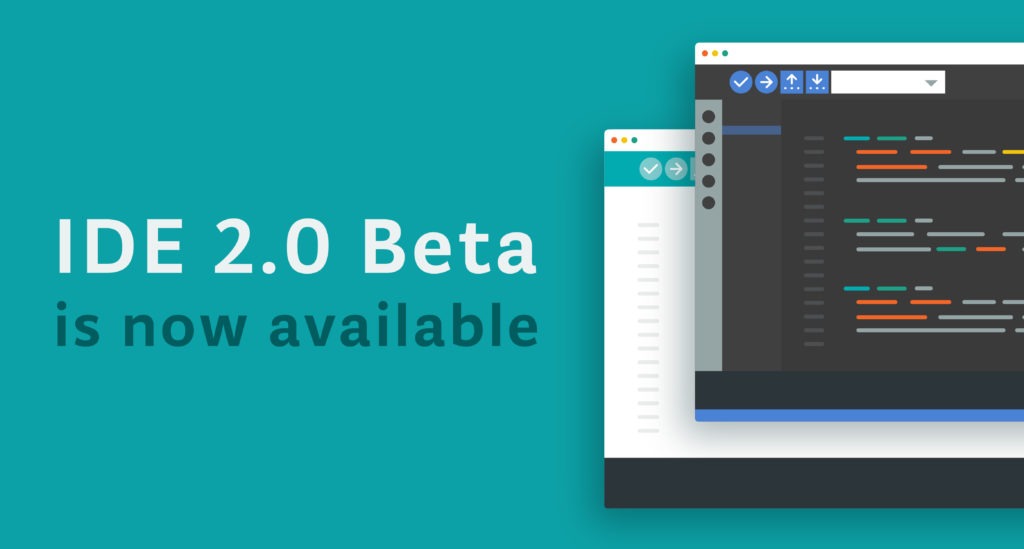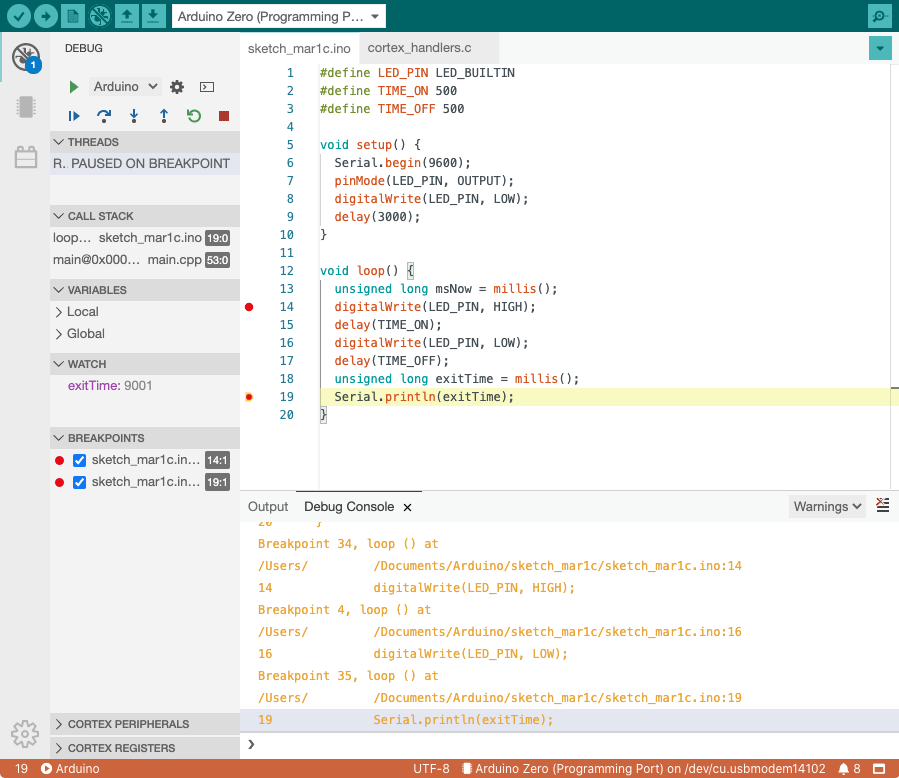Announcing the Arduino IDE 2.0 (beta)

The Arduino IDE is the well-known software we all use to program our boards. Its development started in 2005 based on the graphical interface of the Processing project and has never stopped since. During these years, countless hours of development by the Arduino team with the help of a vibrant community made the Arduino IDE the de facto standard for electronics prototyping. Thanks to an extensible framework based on modular board support packages, the IDE supports more than 1,000 official and non-official boards; it’s translated in 66 languages, mentioned by more than 3,000 books, and is still growing: during the last year, it was downloaded more than 39 millions of times. More than ever.
First off, a big thank you to the Arduino community that makes development possible with donations and — even more important — by buying original Arduino boards: we use your money to pay the developers that work daily on the Arduino open source software for the benefit of everyone. Keep supporting our work!
The path from a simple IDE to an advanced IDE
While the Arduino IDE provides a simple and clear interface that is ideal for the novice users, the more advanced users often report that the editing capabilities are a bit limited compared to modern editors. This includes features like code indentation, block folding, auto-closing brackets, regular expression search and replace, comment toggling. In addition to this, many users have been asking for live debugging, i.e. the ability to run code on an attached board and stop it at a given line to check the contents of variables, memory and registers.
The IDE 1.x is developed in Java, and its monolithic codebase makes it difficult to implement such features. Java is also becoming an obsolete technology for desktop applications and is being phased out by newer operating systems and app stores, which forces us to spend time on working around compatibility issues.
In 2018, we started to refactor the toolchain by announcing a big game changer: arduino-cli, the Arduino command line tool written in Golang that exposes all the core functionalities of the IDE, providing advanced users with a flexible tool they can integrate into their professional IDE of choice. Since then, we maintain and improve arduino-cli on a daily basis (try it now if you haven’t!).
In 2019, we announced the alpha release of a new IDE built on top of arduino-cli and based on a modern software stack (Theia and Electron) under the code name of “Arduino Pro IDE” and we got a lot of positive feedback about it. 2020 has been a busy development year, and a dedicated team of developers has been working behind the scenes to bring the new IDE from a proof-of-concept to a fully functional tool.
The time has come: please welcome the Arduino IDE 2.0 (beta)
We’re pleased to announce that as of today the Arduino IDE 2.0 beta is available for download and its code repositories become open source. It carries a modern editor and provides a better overall user experience thanks to a responsive interface and faster compilation time. Don’t be afraid of trying it today: the upgrade will be frictionless as the interface will look very familiar. But let’s see some of the goodies you’ll find.
While typing, the editor suggests the autocompletion of variables and functions according to the libraries you included:
When right-clicking on a variable or a function, a contextual menu will provide navigation shortcuts to jump to the line (and file) where they are declared:
See this page to learn more about the new editing tools.
But there’s another big feature in the new IDE: a live debugger that allows you to run your code interactively on a board and inspect its execution without writing tens of “Serial.println()” statements. Just fire the debug panel, set breakpoints where you want to pause the execution and inspect the content of variables. Oh, you can even change the content of variables on the fly and resume execution!

As of today, the debugger supports all the Arduino boards in the SAMD platform (MKR family, Nano 33 IoT, Zero). Support for the mbed platform (Nano 33 BLE, Portenta, Nano RP2040 Connect) is being implemented but might take a while. Maintainers of Arduino cores for third-party boards can add support for debugging by adding the relevant configuration parameters; a technical guide for this is coming. You’ll need to connect a debugging probe such as the Segger J-link to the SWD pins on the board and you’ll be ready to go.
The new IDE is based on the Eclipse Theia framework, which is an open source project based on the same architecture as VS Code (language server protocol, extensions, debugger). The front-end is written in TypeScript, while most of the back end is written in Golang.
Try it now!
We need your help to test the new IDE. We want to make it perfect and bug-free, so do not hesitate to download it now and join the discussion in the forum! Ready to get started? Follow along with our tutorials here.